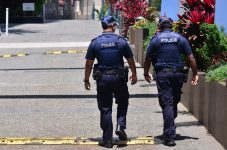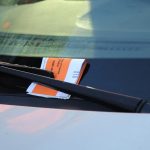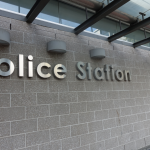How Dangerous is it to be a Police Officer?

There’s a common public perception that being a police officer is one of the most dangerous occupations out there.
While many police officers do face heated situations, they are extremely well-equipped to deal with them, boasting body armour and an arsenal of weaponry. And up against an overwhelmingly unarmed population, police deaths on the job are actually very rare – especially when compared with other occupations.
How dangerous is policing?
It is revealing to compare the actual rates of deaths of police officers to those in other industries.
If you are a postman or work in transport or warehousing, you best read on, because in 2014 Safe Work Australia reported that 49 workers died in those occupations.
The next most dangerous categories for Australian workers were agriculture, forestry and fishing with 46 deaths, construction with 29, and mining, with 14 individuals never returning home at the end of their working day.
How many police officers died in the same period while at work? The answer is zero.
In fact, according to the National Police Memorial honour roll, no police officers have died on duty anywhere in Australia since 2013, when there was the death of a Queensland constable due to a single-vehicle car crash.
This is despite media fuelled hysteria about various supposed dangers and threats. In reality, the occupation of law enforcement across Australia averages just one death per year and is statistically one of the safest jobs around.
So the question arises, why are heavily-armed police officers regularly using lethal force against our overwhelmingly unarmed population?
Balancing the danger against the use of force
There are concerns both here and abroad about the overuse of lethal force by police against members of the community.
In the US, numerous examples of the unjustified use of lethal force by police has led to public outcry against the killing of ‘suspects’ in the name of supposed public and officer safety.
The horrific vision shown recently in the media of a prone suspect handcuffed after being shot eight times in the back whilst running away from a US police officer is haunting in the depths of its brutality.
Police use of lethal force is certainly not limited to the USA, either. As detailed in our previous blogs, police here in Australia are using lethal force on an increasingly regular basis, despite the fact that our population isn’t armed and doesn’t pose the same sort of threat as the population in America.
According to data released by the Australian Institute of Criminology in 2013, 105 people were fatally shot by police between 1990 and 2011.
This raises a number of questions relating to the actual level of personal threat encountered by police, and the appropriateness of responses to those threats.
The influence of a ‘gun culture’
In the US, the constitutional Second Amendment enshrining the right to bear arms results in a population that is highly armed and willing to engage in defence of self through the use of firearms. Gun ownership in the US is at a staggering 89 guns per 100 people.
It is difficult to be accurate about the extent of police shootings in the US, as figures vary wildly. US statistics released by the FBI show the number of ‘justifiable homicides by weapon’ carried out by police officers was 410 in 2013.
But according to the Bureau of Justice, a more accurate average of law enforcement homicides is closer to 928 people killed each year, more than double the actual FBI reporting.
In contrast, how many US police offices were killed in 2013 while on the job? 27 officers were ‘feloniously’ killed and a further 49 by accidental death.
There is an argument that the extremely high rate of gun ownership in the US increases the likelihood of law enforcement personnel employing lethal force to ‘resolve’ threats.
Here, however, while many have gun licences, Australians as a general rule do not own or carry firearms, and the threat that law enforcement personnel face during routine call-outs is not the same as that faced by their American counterparts.
So what alternatives are police in Australia trained in?
Alternatives at a police officer’s disposal
Australian police have the means and training to employ a number of other tactics before drawing a firearm to resolve a situation.
In Queensland for example, officers have the Situational Use of Force Model in the police manual, which outlines 11 options available to de-escalate and resolve situations in regular workplace confrontations.
These range from communication skills, to situational containment, tactical withdrawal, open hand tactics and the use of capsicum spray, batons and tasers.
In these times of a perceived terrorism threat on home shores, and a seeming increase in the numbers of people suffering from drug addictions and mental health conditions, it is particularly important for police to de-escalate situations, rather than reaching for the firearm first.
The last thing we want to see in Australia is a further escalation in the “shoot first, ask questions later” mentality that seems to be prevalent in law enforcement in the US.






